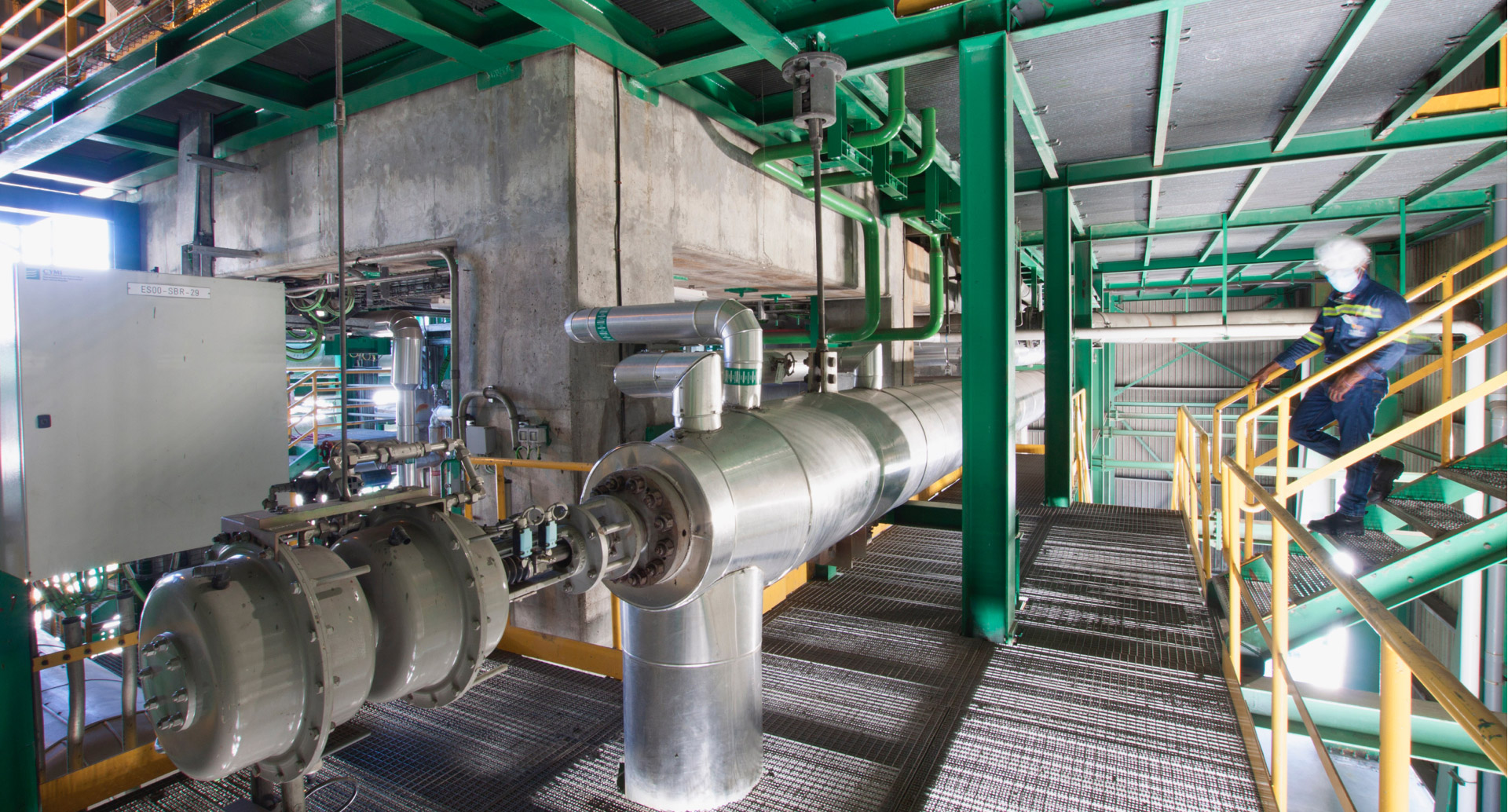Electric cogeneration that makes energy production more efficient
Our technology takes advantage of renewable resources
SPBE applies advanced technologies that prioritize the vision of a more competitive Dominican energy industry. In fact, the company is a national pioneer and one of the most outstanding in the region precisely because of its modern equipment. SPBE aims to achieve a high level of competitiveness in the production of sustainable energy, but with fewer transmission losses and greater flexibility in the use of the generation system. The technology used in our processes takes advantage of renewable resources. Therefore, all biomass obtained from sugarcane bagasse and wood chips is naturally replenished through the different sustainable generation cycles.
Cogeneration displaces the use of traditional fuels, reducing harmful emissions, preserving resources for future generations and increasing the production of renewable energy. According to some estimates, each cultivated hectare of sugarcane absorbs 54 kilograms of carbon dioxide per day. CAEI’s sugarcane plantations cover an area of 35,000 hectares and capture some 690,000 tons of carbon dioxide per year. The timber plantations, with an area of 4,500 hectares, capture 58,500 tons of emissions per year.
SPBE has an osmosis treatment system for the water used in the cooling processes that allows it to be reused in a high number of cycles through the cooling tower. This system reduces water consumption from the source well. The reported value of water consumption is recorded through meters that are installed in SPBE and the basis of comparison corresponds to the water consumption in a conventional power plant without cogeneration. SPBE consumes 26% less water than a conventional plant without a water treatment system.
SPBE technology generates simultaneously:
Through the use of bioenergy that is:
The technology applied in the SPBE cogeneration process:
- Uses fuels of renewable origin.
- Replaces the consumption of fossil fuels.
- Contributes to the reduction of emissions
- Captures CO2 through sugarcane and wood crops.
- Eliminates losses in energy transmission.
- Reduces the amount of generated pollutants.
- Represents lower production costs.
